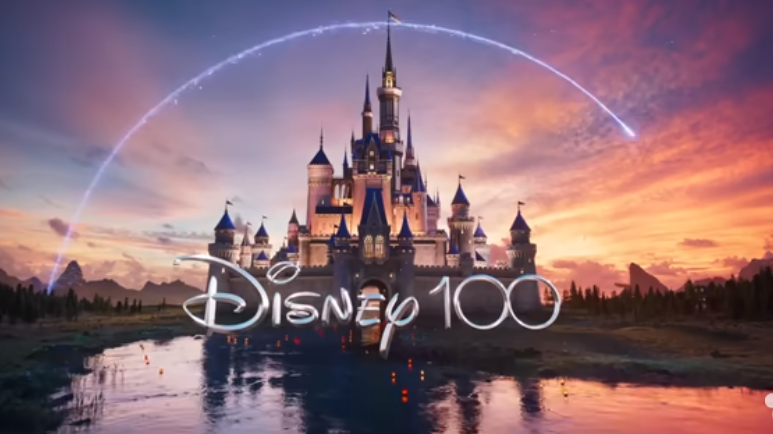
The Walt Disney Co. reported a $460 million loss in the second quarter, as the company reduced its streaming losses but took massive charges as part of its restructuring.
The loss for Disney’s fiscal third quarter was equal to 25 cents a share and included $2.65 billion in charges as it looks to reduce costs. A year ago, the company reported net income of $1.4 billion, or 77 cents a share.
Revenues rose 4% to $22.3 billion.
Disney cut its direct-to-consumer losses in half to $512 million from $1.061 billion a year ago. There were smaller losses at Disney Plus, higher operating income at Hulu and a smaller loss at ESPN Plus, the company said.
Direct-to-consumer revenue rose 9% to $5.525 billion.
The improvement at Disney Plus was due to higher subscription revenue and a decrease in marketing costs. Programming and production costs were higher while advertising revenue dipped, the company said.
At the end of the fiscal third quarter, Disney Plus had 105.7 million “core” subscribers, up 1% from the end of the previous quarter.
Disney Plus Hotstar subscribers fell 24% to 40.4 million subscribers from 52.9 million.
Domestic Disney Plus subscribers fell 1% to 46 million from 46.3 million at the end of Q2.
During the company's earnings call, CEO Bob Iger said that as of the end of Q3, the company has signed up 3.3 million subscribers to its ad supported Disney plus option. “Since its inception, 40% of new Disney Plus subscribers are choosing add supported products,” Iger said.
Iger also said that the company would be announcing price increases for its streaming services, but that pricing for the stand alone ad-supported Disney plus and Hulu offering will remain unchanged.
Streaming advertising is growing faster than traditional advertising, and Disney is trying to encourage customers to subscribe to its ad-supported products, Iger said.
ESPN Plus had 25.2 million subscribers, down from 25.3 million in the previous quarter.
Hulu had 48.3 million subscribers, up from 48.2 million subscribers last quarter. It had 44 million SVOD-only subscribers, up from 43.7 million last quarter. Hulu Plus Live TV had 4.3 million subscribers, down 100,000 from 4.4 million in the previous quarter.
“Our results this quarter are reflective of what we’ve accomplished through the unprecedented transformation we’re undertaking at Disney to restructure the company, improve efficiencies, and restore creativity to the center of our business,” Iger said.
“In the eight months since my return, these important changes are creating a more cost-effective, coordinated and streamlined approach to our operations that has put us on track to exceed our initial goal of $5.5 billion in savings as well as improved our direct-to-consumer operating income by roughly $1 billion in just three quarters,” Iger said. “While there is still more to do, I’m incredibly confident in Disney’s long-term trajectory because of the work we’ve done, the team we now have in place, and because of Disney’s core foundation of creative excellence and popular brands and franchises.”
Iger identified three business areas that will drive business growth over the next five years: Those are the film studios, the parks business and streaming. “All of which are inextricably linked to brands and franchises,” he said.
Disney interim CFO Kevin Lansberry said that content spending for the year is expected to come in at $27 billion, less than the company’s previous guidance.
Lansberry said the decline was because of lower spending on produced content in part due to the writers and actors strikes.
The company expects to be able to recommend that the board declare a “modest dividend” by the end of the year, he said.
Last month, Iger opened a can of worms by saying in an interview that Disney’s TV and cable networks are not growth businesses and may no longer be “core” parts of the company.
He also said Disney would be looking for strategic partners for ESPN as it heads towards becoming a direct-to-consumer business.
Disney has reportedly talked to sports leagues about becoming partners with ESPN. ESPN also announced a deal with Penn Entertainment to launch sports books under the ESPN Bet brand that will bring ESPN $2 billion over 10 years.
Iger reiterated those plans during the earnings call. "We're considering potential strategic partnerships for ESPN looking at distribution, technology, marketing, and content opportunities where we retain control of the ESPN. We receive notable interest from many different entities and we look forward to sharing more details at a later date when we are further along in this process," he said.
Iger brought back former senior Disney execs Kevin Mayer and Tom Staggs as advisers to the company as it plots its streaming and sports strategies.
Iger also caught flak for calling the demands by striking writers and actors “unrealistic” and “disruptive.”
SAG-AFTRA president Fran Drescher shot back that “it’s so obvious that he [Iger] has no clue as to what is really happening on the ground with hard-working people that don’t make anywhere near the salary he is making.”
Iger was more conciliatory in his prepared remarks during the earnings call.
"Nothing is more important to this company than its relationships with the creative community. And that includes actors, writers, animators, directors, and producers. I have deep respect and appreciation for all those who are vital to the extraordinary creative engine that drives this company and our industry," Iger said. "And it is my fervent hope that we quickly find solutions to the issues that have kept us apart these past few months. And impersonally committed to working to achieve this result."
Operating income at Disney’s Media and Entertainment Distribution division fell 18% to $1.134 billion, as revenues fell 1% to $14 billion.
Disney’s linear networks’ operating income plunged 23% to $1.889 billion as revenue fell 7% to $6.69 billion.
Operating income at Disney’s domestic channels was down 14% to $1.78 billion, with declines in both broadcasting and cable.
The decrease in broadcasting was due to lower results at ABC and the owned television stations, both of which reflected lower advertising revenue, the company said.
Lower operating income at cable was due to higher sports programming and production costs and lower affiliate revenue, partially offset by a modest increase in advertising revenue.
Domestic linear network affiliate revenue decreased by 2%, with a 6% decline in subscribers partially offset by 4% increases in contractual rate increases.
Disney’s Parks, Experiences and Products division had operating income of $2.425 billion, up 11%. Revenue rose 13% to $8.326 billion.







